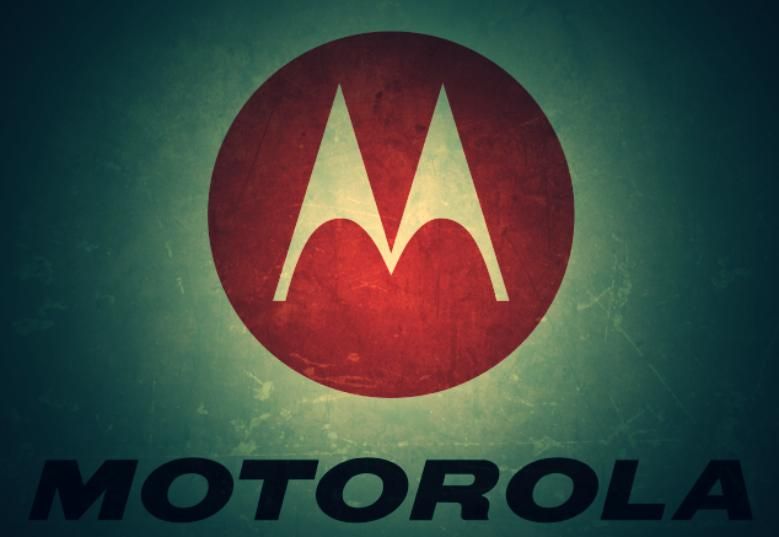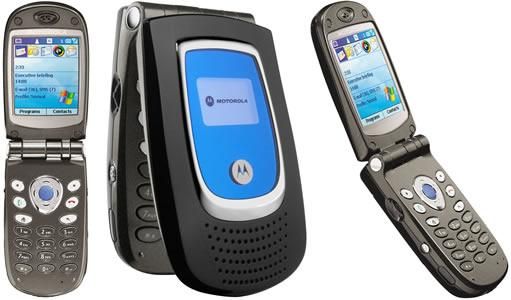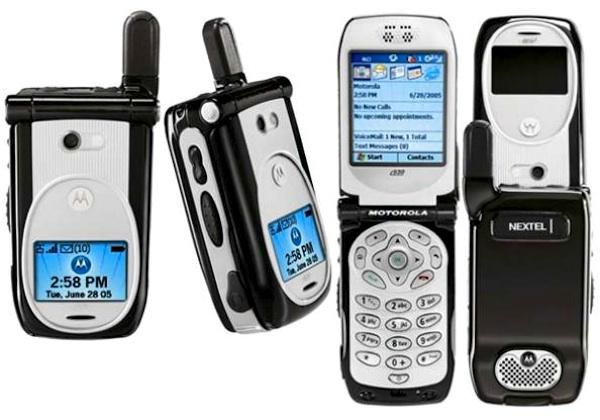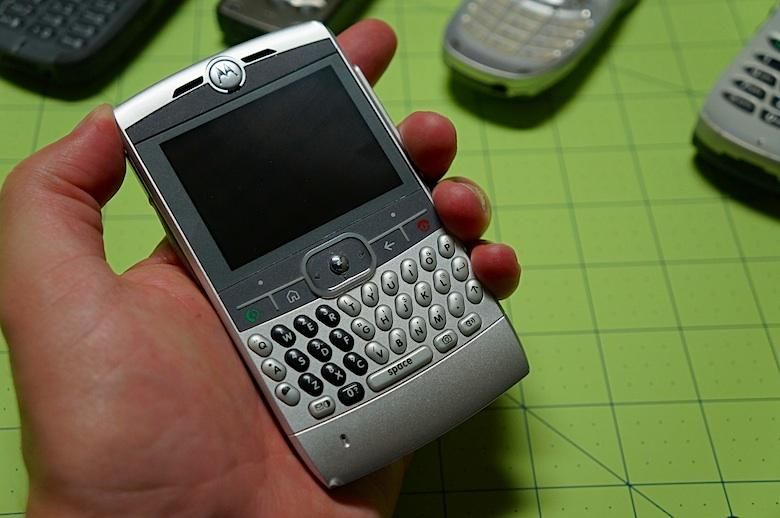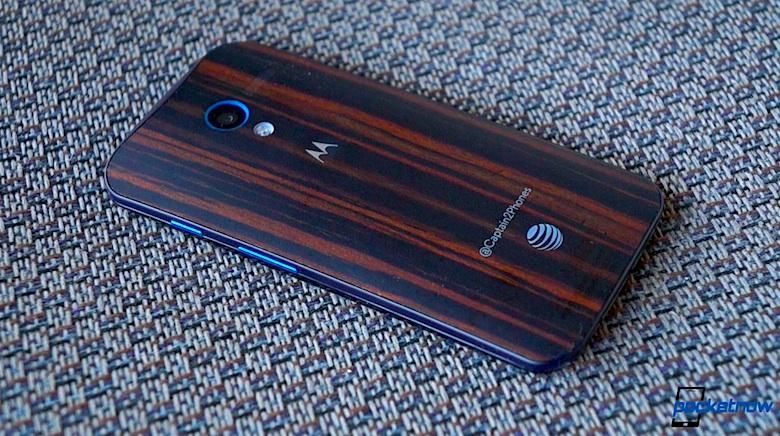As we prepare to say goodbye to the “Google-ified” Motorola we’d only just gotten to know, it bears remembering that the brand hasn’t been issued a death warrant. Motorola under Lenovo may well flourish, after all, so it’s premature to start planning the funeral.
Still, two ownership changes in two years is a lot for any company, and from the inevitable brain drain of personnel losses to the unpredictable nature of marketing machinations, the future of the Motorola brand is anything but certain. So we thought it’d be nice, at this crossroads in Motorola’s history, to take a look back at some of the smartphones that made the company great. (As we’re a smartphone-focused site, we’ve left the featurephone side of this equation to you; feel free to wax poetic about your RAZRs, SLVRs, and i860s in the comments below.)
MPx200 (2003)
Our own Adam Z. Lein reported on this phone’s release over a decade ago, when the mammoth Motorola was still one of the world’s top handset manufacturers: “The world’s No. 1 software maker is expected to announce on Monday a partnership with Motorola, the No. 2 handset maker, and AT&T Wireless to introduce a new handset called the MPx200 smartphone.”
The beauty of the MPx200 wasn’t in its raw power -it ran an outdated version of Windows Mobile right out of the box- but in its affordability (sub-$100 with a two-year AT&T contract). It also demonstrated to the world that a Windows Mobile smartphone could be shoehorned into the clamshell form factor that was all the rage at the time, without sacrificing amenities like a speakerphone or memory card compatibility.
The MPx220 would arrive a year later to replace this device (and Pocketnow’s Christopher Spera would end up blogging about that unit during his week-long test drive) but it’s the 200 model that people remember – the model that helped kick off the era of Windows Mobile smartphones.
i930 (2005)
If the MPx200’s software was outdated at launch, then the OS powering Motorola’s i930 was positively ancient. The i930 launched on Sprint Nextel in 2005 after delays of over a year – but even if it had debuted on time, its Windows Mobile 2003 operating system would have been a year out of date. It also lacked Bluetooth (already standard on smartphones of the time) and its camera was a piddling VGA shooter instead of the 1+ megapixel cameras featured by its competition. Plus, it was a brick and a half, measuring a whopping 30mm thick.
But the i930 had something special to counter all this: an iDEN radio that made it work with Nextel’s push-to-talk Direct Connect service. PTT was huge in America at the time, and combining it with Microsoft’s smartphone OS, no matter how dated, resulted in a powerhouse the likes of which had never been seen on the iDEN network. For more, see our throwback review of the i930 below.
Motorola Q (2006)
Piggybacking on the success of its astoundingly popular RAZR, Motorola in 2006 partnered with Verizon Wireless to release the Q: a Windows Mobile smartphone featuring a full QWERTY keyboard in a knife-like form factor, all of it squeezed into a case that was then impressively thin at 11.5mm. Motorola ported styling cues from the RAZR, including an EL keyboard backlight and an aggressive angular design, while also (to the delight of BlackBerry expats everywhere) incorporating a jog dial and back key on the side to augment the four-way directional pad on the front.
By the time the device launched on its second carrier, Sprint, in 2007, smartphones were already a well-established category in the consumer space. But with its RAZR-inspired styling, the Q was one of the first smart devices that could legitimately be called sexy, and it was successful enough to spawn a few sequels before the line died out. We did a throwback on this one, too:
Droid (2009)
The Droid wasn’t Motorola’s first Android phone – but thanks to a robust hardware design, Android 2.0, and a marketing partnership with Verizon Wireless that positioned it as the first legitimate iPhone competitor, it was the first Motorola Android phone that mattered.
While we’d been impressed with Motorola’s earlier CLIQ, the first Droid took things to another level entirely. Mostly that’s thanks to Android 2.0 with its alluring cross-section of feature enhancements, from Maps improvements to live wallpaper support to Microsoft Exchange compatibility. Combined with the phone’s hardware keyboard -still an important consideration for some customers in 2009- these features made the phone hard to resist. What’s more, its brand campaign was so successful that it’s still possible to find people who call Android-powered phones “Droids,” whatever the actual make.
Moto X (2013)
Unfortunately, Motorola followed the Droid’s success the same way it followed the RAZR’s back in 2004: by endlessly iterating on the original with only marginal improvements, gradually diluting the brand until suddenly the company was kicking out R2D2 phones and plasticky nonsense like the Droid Ultra.
It took a Google buyout to kick Motorola back into relevance, but when it came it came in force. The Moto X, after initially taking fire for its “underpowered” internals, proved itself a potent offering upon its release last summer. Under Google, Motorola succeeded in delivering a smartphone that focused on intelligently leveraging the power it had, rather than throwing more power at an existing feature set. From Active Notifications to Touchless Control to the hardware customization made possible by MotoMaker and American assembly, the Moto X did what not many smartphones could do: it surprised us, by making our lives easier.
We’re eager to see what Motorola can accomplish under Lenovo ownership once the acquisition closes and the company’s employees can once again get back to the business of building phones. Until then, though, we want to hear your thoughts. What were your favorite smartphones from Motorola’s long history? Which direction would you like to see the company go after it’s officially nestled in its new digs under Lenovo’s roof? Leave your thoughts below!
•
Itching for more on Motorola’s storied history? Start with our Moto G review to see how the company turned a stripped-down Moto X into the world’s most impressive low-cost Android phone, then check out how Motorola (and now Google) is pushing the boundaries of smartphone hardware with modular construction!

